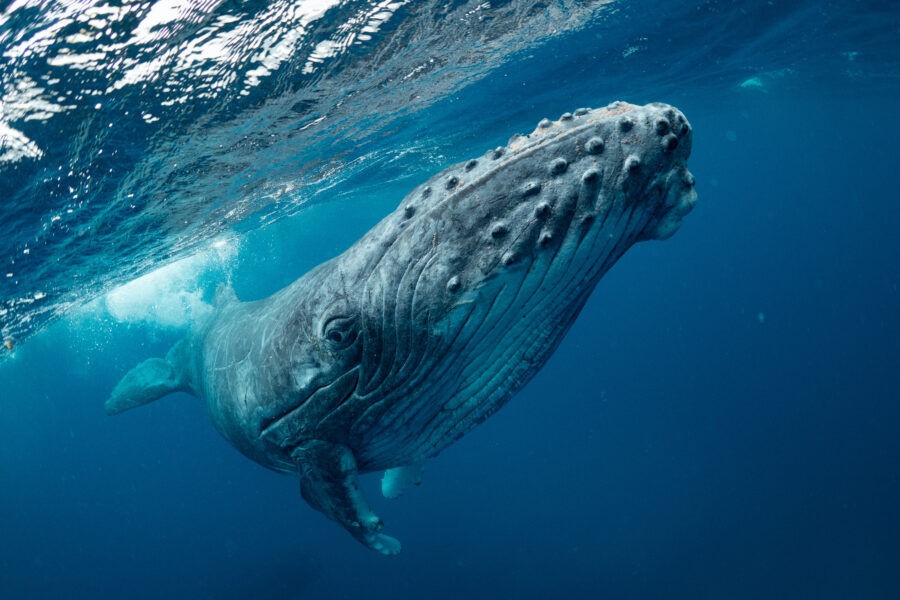Whales who warble less likely to win a female’s affections

New research has confirmed the mating rituals of humpback whales along Australia’s eastern seaboard are changing, with males now opting to physically compete with their rivals instead of singing to attract a mate.
“In 1997, a singing male was almost twice as likely to be seen trying to breed with a female when compared to a non-singing male,” says Associate Professor Rebecca Dunlop, from the University of Queensland’s School of Biological Sciences. “But in 2015 it had flipped, with non-singing males almost five times more likely to be recorded trying to breed than singing males.”
Rebecca believes this new behaviour is linked to Australia’s ballooning population of humpback whales, which were hunted to near-extinction in the 1960s. Data collected off Queensland’s Peregian Beach has revealed the humpback whale population increased from 3700 in 1997 to 27,000 in 2015.
“If competition is fierce, the last thing the male wants to do is advertise that there is a female in the area, because it might attract other males that could out-compete the singer for the female,” Rebecca says. “By switching to non-singing behaviour, males may be less likely to attract competition and more likely to keep the female.”
Physical aggression among humpback whales includes ramming, charging and even trying to “head slap” each other.
“This runs the risk of physical injury, so males must weigh up the costs and benefits of each tactic,” says Rebecca.
Singing was the dominant mating tactic in 1997. As whale behaviour continues to adapt to these new social pressure, scientists are fascinated to see how this behaviour will be shaped in the future.
The research was published in Communications Biology.


